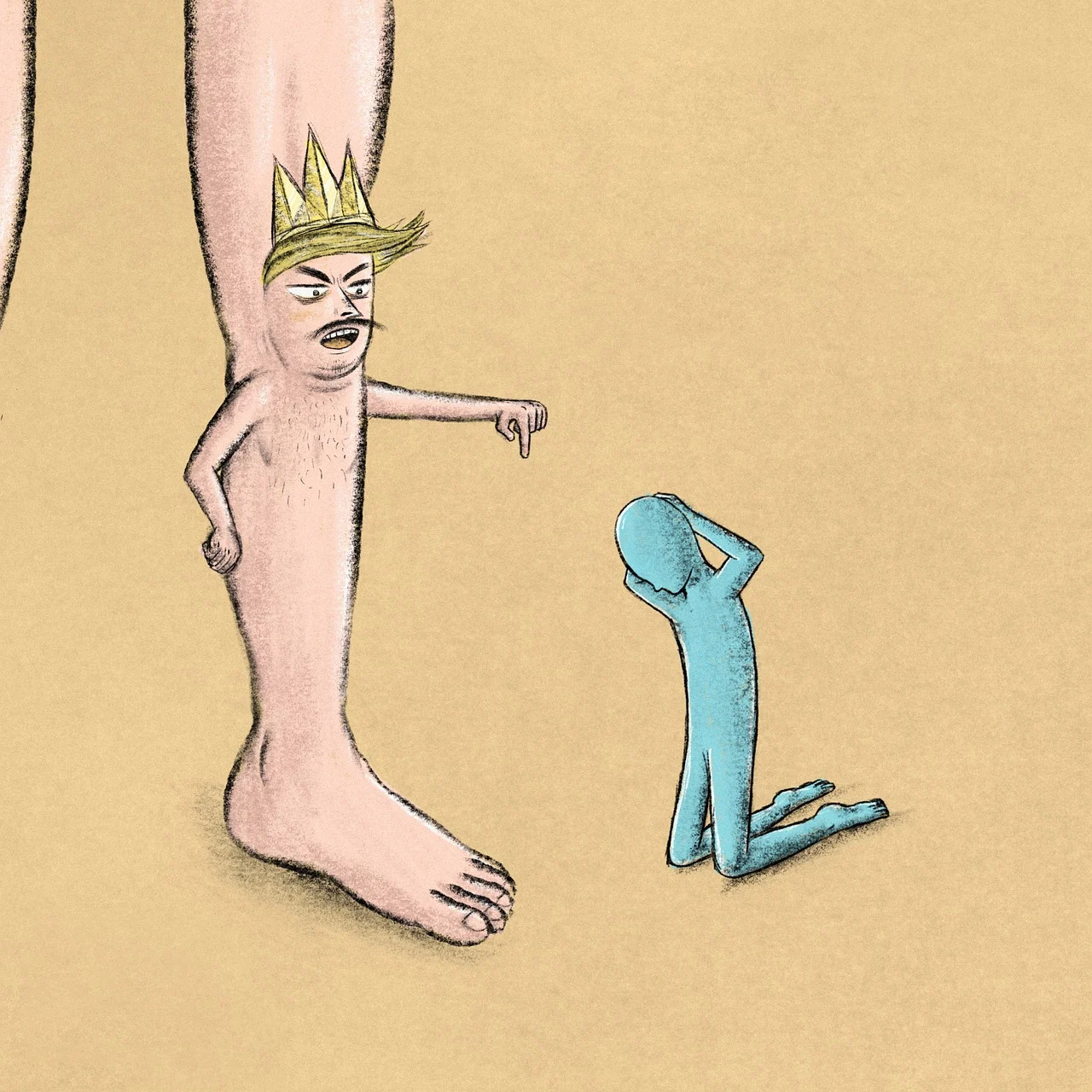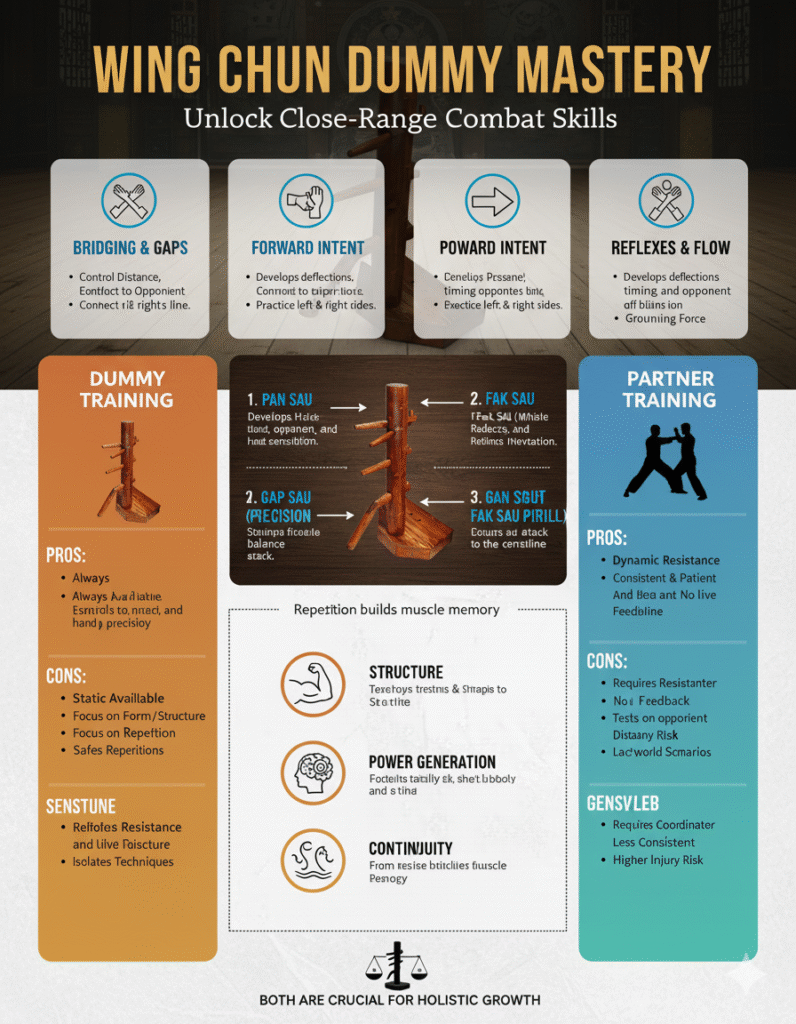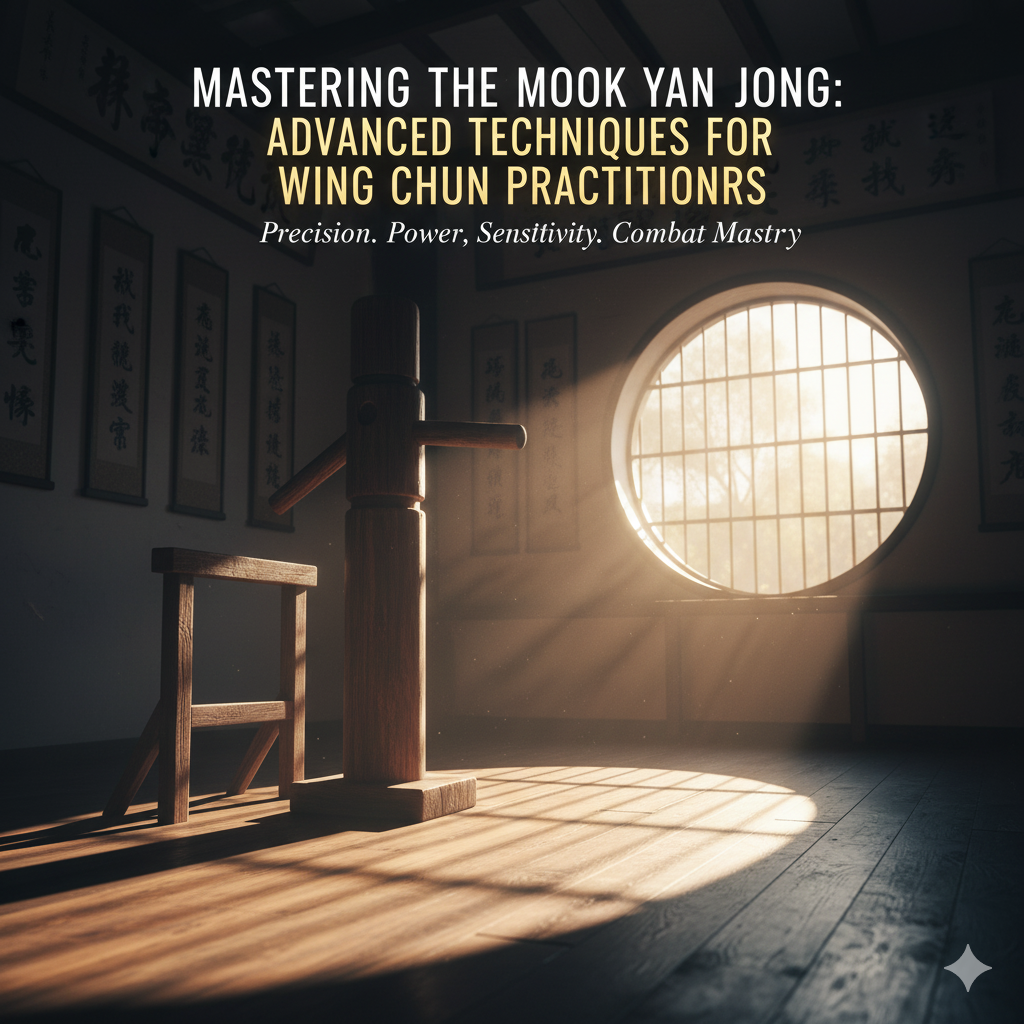Wing Chun is traditionally recognized for its close-range combat techniques, focusing on efficiency and directness.
However, high kicks are an integral part of the Wing Chun repertoire.
offering a complementary skill set that enhances a practitioner’s overall martial arts capabilities.
Historically, high kicks were incorporated into Wing Chun to provide a versatile.
And comprehensive fighting style, addressing various combat scenarios beyond immediate proximity.
The integration of high kicks in Wing Chun training brings several substantial benefits.
Firstly, high kicks significantly improve flexibility.
Consistent practice stretches the muscles and joints, enabling a wider range of motion.
This is crucial not only for executing high kicks effectively but also for enhancing overall agility and movement fluidity in other techniques.
In addition to flexibility, high kicks contribute to developing greater strength, particularly in the lower body.
The muscles of the legs, hips, and core are engaged extensively during high kicking drills, leading to increased muscular endurance and power.
This strength translates into more forceful and impactful kicks, adding a potent offensive tool to the Wing Chun arsenal.
Balance is another critical benefit derived from practicing high kicks.
The act of lifting and extending the leg while maintaining an upright posture challenges the body’s equilibrium.
Over time, this practice hones a practitioner’s balance and stability, which are essential not only for executing high kicks but also for maintaining control during various combat maneuvers.
While Wing Chun’s core principles emphasize close-range strikes, integrating high kicks can diversify a practitioner’s techniques, providing options for mid to long-range engagements.
This versatility ensures that a Wing Chun practitioner is well-prepared for different combat situations, making high kicks a valuable addition to their martial skills.
Basic Principles of High Kicks in Wing Chun
Mastering high kicks in Wing Chun requires a deep understanding of the fundamental principles that guide the art.
One of the most critical aspects is the stance, which serves as the foundation for balance and power.
In Wing Chun, the stance must be both stable and flexible, allowing for quick adjustments while maintaining a strong base.
Proper alignment of the body ensures that the energy flows efficiently from the ground up through the leg, maximizing the impact of the kick.

Maintaining balance is essential when executing high kicks.
Wing Chun practitioners emphasize the importance of the centerline theory, which involves keeping one’s body aligned along an imaginary vertical line that runs down the center of the body.
This concept helps in maintaining stability and ensuring that the body’s weight is evenly distributed, thus preventing overextension or loss of balance during high kicks.
Generating power in high kicks without compromising stability is a nuanced skill.
In Wing Chun, power comes from the efficient use of body mechanics rather than sheer muscle strength.
This involves using the hips and core muscles to drive the kick while keeping the upper body relaxed and aligned.
Proper breathing techniques also play a crucial role in maintaining balance and generating power.
Exhaling sharply at the moment of impact can help in focusing energy and maintaining control.
Another vital principle in Wing Chun high kicks is self-protection.
When executing a high kick, practitioners must be mindful of their vulnerabilities and potential counterattacks.
Keeping the non-kicking leg slightly bent and the hands up in a guard position can help in maintaining balance and readiness to defend against any immediate threats.
Additionally, retracting the kicking leg quickly after the strike minimizes the window of vulnerability.
In conclusion, the basic principles of high kicks in Wing Chun revolve around stance, alignment, balance, and controlled power.
By adhering to these principles, practitioners can execute high kicks effectively while minimizing the risk of counterattacks and maintaining overall stability.
Warm-Up and Flexibility Exercises

Preparing the body for high kicks in Wing Chun necessitates a comprehensive warm-up routine focused on flexibility and injury prevention.
A well-rounded warm-up enhances performance by increasing blood flow to the muscles, improving range of motion, and priming the nervous system for the demands of high-kick training.
Begin with dynamic stretches to elevate muscle temperature and enhance joint mobility.
Leg swings are particularly effective; perform front-to-back and side-to-side leg swings to loosen the hip flexors and adductors.
Hip circles, performed with both small and large radii, can further prepare the hip joint complex.
These movements should be executed with controlled speed to avoid muscle strain.
Additionally, incorporate drills that mimic the motion of high kicks.
Knee raises and butt kicks are practical exercises that engage the quadriceps and hamstrings, respectively.
Another beneficial drill is the high-knee march, which not only mobilizes the hip flexors but also engages the core, crucial for maintaining balance during high kicks.
Following dynamic stretches, transition to static stretching to enhance flexibility.
Hold each stretch for 20-30 seconds to allow sufficient time for muscle elongation.
Key stretches include the hamstring stretch, where one sits with legs extended and reaches toward the toes, and the butterfly stretch, which targets the inner thighs and groin.
For the lower back, seated forward bends and standing toe touches are effective.
Incorporate hip flexor stretches such as the lunge stretch, where one kneels on one leg while extending the other forward, focusing on pushing the hips downward.
The pigeon pose, borrowed from yoga, is another excellent option to stretch the glutes and the piriformis muscle.
Completing a thorough warm-up with these exercises not only primes the body for the intensity of high kicks but also significantly reduces the risk of injuries.
Consistency in performing these routines ensures sustained flexibility and optimal performance in Wing Chun practice.
Step-by-Step Guide to Basic High Kicks

Mastering high kicks in Wing Chun requires a comprehensive understanding of the mechanics involved, from the initial stance to the execution and recovery phases.
Below is a detailed, step-by-step guide to help you perform basic high kicks effectively and with proper form.
1. Initial Stance
Begin by standing in a neutral stance with your feet shoulder-width apart.
Your knees should be slightly bent, and your weight evenly distributed.
This stance provides stability and readiness for the kick.
Ensure your core is engaged and your upper body remains relaxed but alert.
2. Chambering the Kick
Chambering involves lifting the kicking leg to prepare for the strike.
Raise your knee to waist height while keeping the foot flexed.
Your standing leg should be slightly bent to maintain balance.
Keep your hands up in a guard position to protect your face and upper body.
3. Execution of the Kick
Extend your leg swiftly and with control.
Your target should be at or above waist height.
Aim for precision rather than power.
The foot should make contact with the target using the ball or heel, depending on the type of kick.
Maintain a straight line from your hip to your foot, ensuring your body remains aligned.
4. Recovery Phase
After the kick, retract your leg quickly back to the chambered position.
This helps maintain balance and prepares you for subsequent movements.
Lower your leg back to the initial stance with control, avoiding any abrupt movements that could compromise your form.
Tips for Proper Form
Maintaining proper form is crucial for effective high kicks in Wing Chun.
Focus on keeping your core engaged throughout the movement.
Avoid leaning back excessively, which can throw off your balance.
Ensure your kicks are controlled and precise, prioritizing technique over brute strength.
Common Mistakes to Avoid
Some common mistakes include over-extending the kick, which can lead to loss of balance, and neglecting the chambering phase, resulting in a weak kick.
Additionally, avoid dropping your guard during the kick, as this compromises your defensive posture.
By following these steps and focusing on proper form, you can effectively master basic high kicks in Wing Chun, enhancing both your offensive and defensive capabilities.
Advanced High Kicking Techniques
In Wing Chun, advanced high kicking techniques represent a significant evolution from the basic kicks,l.
incorporating more intricate movements and strategic applications.
Mastering these techniques can greatly enhance both sparring and self-defense capabilities.
One of the primary advanced techniques is the “Tiu Ma” or “Rising Kick,” which targets the opponent’s head or upper body with a swift, upward motion.
This kick requires precise timing and balance, often initiated from a firm stance to maximize power and accuracy.
Another notable technique is the “Gwa Chui” or “Inverted Crescent Kick.”🦵
This kick involves a sweeping motion that arcs upwards and across the opponent’s body, designed to bypass guards and strike vulnerable areas.
It’s particularly effective in disrupting an opponent’s rhythm and creating openings for subsequent attacks.
Incorporating “Gwa Chui” into combinations can amplify its effectiveness, such as following a quick jab or a low kick to divert attention before delivering the high kick.
Combining high kicks with traditional Wing Chun moves, such as the “Pak Sao” (slap block) or “Bong Sao” (wing arm), can create fluid sequences that enhance both offense and defense.

For instance, transitioning from a “Bong Sao” block into a “Tiu Ma” kick can seamlessly shift from defense to a counter-attack, exploiting the opponent’s momentary lapse in guard.
Advanced high kicking techniques necessitate adjustments in stance and movement.
A deeper, more stable stance is often required to support the elevated center of gravity during high kicks.
Additionally, pivoting on the supporting foot and maintaining a flexible but strong core are crucial for executing these kicks with precision and power.
Regular practice and conditioning of the legs and core muscles are essential to develop the strength and flexibility needed for these advanced techniques.
In summary, integrating advanced high kicking techniques into your Wing Chun practice can significantly enhance combat effectiveness.
By understanding and applying these techniques in combination with other Wing Chun moves.
practitioners can develop a versatile and formidable arsenal for both sparring and self-defense scenarios.
Strength and Conditioning for High Kicks
Strength and conditioning play a pivotal role in mastering high kicks in Wing Chun.
A well-rounded regimen targets key muscle groups, including the legs, core, and glutes, to enhance both power and endurance.
Effective training encompasses resistance training, plyometrics, and bodyweight exercises, each contributing uniquely to kicking performance.
Resistance training is fundamental for building muscle strength and power.
Incorporating exercises such as squats, deadlifts, and lunges helps develop the quadriceps, hamstrings, and glutes.
These compound movements not only build strength but also improve balance and stability, which are crucial for executing high kicks.
Progressive overload, where the weight or resistance is gradually increased, ensures continuous improvement and muscle adaptation.
Plyometric exercises, characterized by explosive movements, are essential for developing the explosive power necessary for high kicks.
Box jumps, jump squats, and plyometric lunges enhance the fast-twitch muscle fibers.
which generate the quick, powerful bursts needed for effective kicking.
Including these exercises in your routine can significantly improve the speed and height of your kicks.
Bodyweight exercises, such as leg raises, planks, and bridges, are excellent for building core strength and stability.
A strong core is vital for maintaining balance and control during high kicks.
Additionally, incorporating dynamic stretches and mobility drills, such as high knee marches and hip flexor stretches, can improve flexibility and range of motion, allowing for higher and more controlled kicks.
Sample workout routines might include a combination of these exercises.

For instance, a session could start with dynamic stretching, followed by resistance training with squats and lunges, then plyometrics with box jumps, and conclude with core exercises like planks and leg raises.
Progression can be achieved by increasing the intensity, duration, or complexity of the exercises over time.
By integrating a comprehensive strength and conditioning program into your training.
you can enhance your high kicks’ power, speed, and precision, ultimately improving your overall Wing Chun performance.
Common Mistakes and How to Avoid Them
When learning and executing high kicks in Wing Chun, practitioners often encounter several common mistakes that can hinder their progress and effectiveness.
The first notable error is an improper stance.
A stable stance is foundational in Wing Chun, as it supports balance and power generation.
Many students tend to lean too far forward or backward, compromising their stability.
To correct this, ensure your weight is evenly distributed across both feet and maintain a slight bend in the knees.
Visualize grounding yourself like a tree with deep roots, which will help sustain balance during high kicks.
Another prevalent mistake is the lack of balance.
High kicks require a delicate equilibrium, and any deviation can lead to ineffective strikes and increased vulnerability.
Practitioners often lose balance by not engaging their core muscles adequately.
To enhance balance, incorporate core strengthening exercises such as planks and leg raises into your training routine.
Additionally, practice high kicks slowly at first, focusing on controlled movements and gradually increasing speed as your balance improves.
Insufficient flexibility is also a significant barrier to mastering high kicks in Wing Chun.
Tight hamstrings and hip flexors limit the range of motion, resulting in low and less impactful kicks.
Regular stretching exercises are crucial to improving flexibility.
Dynamic stretches, such as leg swings, can prepare your muscles for the demands of high kicks.
Static stretches, like the seated forward bend, can help elongate muscles post-training.

Consistent flexibility training will gradually increase your kicking height and efficiency.
Real-life examples further illustrate the impact of these errors.
Consider a practitioner who consistently fails to maintain balance during sparring sessions.
This instability not only reduces the power of their kicks but also leaves them open to counterattacks.
By addressing balance through targeted exercises and mindful practice, their performance can significantly improve.
In conclusion, addressing these common mistakes — improper stance, lack of balance, and insufficient flexibility — will greatly enhance your proficiency in high kicks within Wing Chun.
Applying these practical tips and corrections will lead to more effective techniques and a stronger overall performance.
Creating a Practice Routine for High Kicks
Developing an effective practice routine is crucial for incorporating high kicks into your Wing Chun training.
A well-rounded routine should include a balanced mix of drills, sparring, and conditioning exercises to ensure comprehensive development.
Consistency, patience, and gradual progression are the cornerstones of mastering high kicks.
Begin by integrating specific high kick drills into your daily practice.
These drills should focus on both technique and flexibility.
For instance, start with basic stretching exercises to enhance leg flexibility, followed by controlled repetitions of high kicks to perfect form and balance.
Incorporating these drills into your warm-up routine will ensure your muscles are adequately prepared.
Next, include sparring sessions to apply high kicks in a realistic context.
Partnered sparring allows you to practice timing, distance, and accuracy.
Begin with light contact to build confidence and gradually increase intensity.
Remember, the objective is to simulate real-life scenarios while maintaining control and safety.
Conditioning exercises are equally essential.
Strength training, particularly for the core and lower body, will enhance your kicking power and stability.
Incorporate exercises such as squats, lunges, and plyometric drills to build the necessary muscle strength and endurance.
Additionally, aerobic conditioning, like running or cycling, will improve your overall cardiovascular fitness, crucial for sustained sparring sessions.
To ensure balanced development, create a weekly training schedule.
For example, allocate specific days for technique drills, sparring, and conditioning.
A sample schedule might include:
- Monday: Technique drills and stretching
- Tuesday: Sparring sessions
- Wednesday: Strength conditioning
- Thursday: Rest or light activity
- Friday: Technique drills and stretching
- Saturday: Sparring sessions
- Sunday: Aerobic conditioning
Tracking progress is vital to maintaining motivation and making adjustments as needed.
Keep a training journal to log your exercises, note improvements, and identify areas needing additional focus.
Regularly review your progress and set achievable goals to keep your training aligned with your overall Wing Chun development.
By following a structured routine that balances drills.
sparring, and conditioning, and by maintaining consistency and patience.
you will gradually master the high kicks in Wing Chun.
enhancing both your technique and overall martial arts proficiency.



